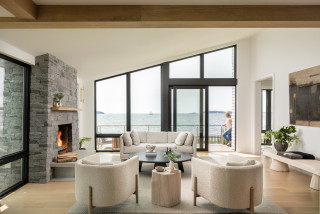
This article was originally published by a www.houzz.com . Read the Original article here. .

This article was originally published by a www.houzz.com . Read the Original article here. .
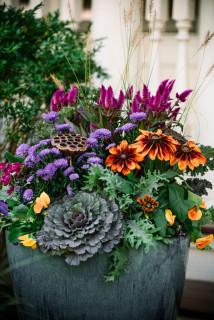
Take in the fall foliage on a hiking trail, at a local park or in your yard. Turn raking leaves from a chore into a chance to appreciate Mother Nature’s show. Once you have a pile of leaves, it might just be time to channel your inner child and jump in.
Rather than immediately bagging your leaves, consider using some or all of them as a natural mulch. You can spread a thin layer over your garden beds or lawn, allowing the leaves to decompose and add nutrients to the soil. Don’t make the layer too thick, especially over a lawn, as you don’t want to kill whatever might be growing underneath. Use a lawnmower or garden shredder to turn the leaves into smaller pieces.
5 Ways to Put Fall Leaves to Work in Your Garden
This article was originally published by a www.houzz.com . Read the Original article here. .

Take in the fall foliage on a hiking trail, at a local park or in your yard. Turn raking leaves from a chore into a chance to appreciate Mother Nature’s show. Once you have a pile of leaves, it might just be time to channel your inner child and jump in.
Rather than immediately bagging your leaves, consider using some or all of them as a natural mulch. You can spread a thin layer over your garden beds or lawn, allowing the leaves to decompose and add nutrients to the soil. Don’t make the layer too thick, especially over a lawn, as you don’t want to kill whatever might be growing underneath. Use a lawnmower or garden shredder to turn the leaves into smaller pieces.
5 Ways to Put Fall Leaves to Work in Your Garden
This article was originally published by a www.houzz.com . Read the Original article here. .

Take in the fall foliage on a hiking trail, at a local park or in your yard. Turn raking leaves from a chore into a chance to appreciate Mother Nature’s show. Once you have a pile of leaves, it might just be time to channel your inner child and jump in.
Rather than immediately bagging your leaves, consider using some or all of them as a natural mulch. You can spread a thin layer over your garden beds or lawn, allowing the leaves to decompose and add nutrients to the soil. Don’t make the layer too thick, especially over a lawn, as you don’t want to kill whatever might be growing underneath. Use a lawnmower or garden shredder to turn the leaves into smaller pieces.
5 Ways to Put Fall Leaves to Work in Your Garden
This article was originally published by a www.houzz.com . Read the Original article here. .
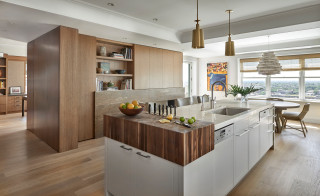
Owners of beautiful edge-grain wooden island countertops might think twice about using them as cutting surfaces. New Orleans-based NOLA Boards, which made this T-shaped one from century-old cypress logs pulled from the bottom of a river, addressed that reluctance by insetting a designated cutting board. It’s made from the same sinker cypress wood but in end-grain block construction, which shows knife marks less readily and is easier on blades than edge-grain. The best part? The board is removable, making cleanup, maintenance and serving a breeze.
Design note: The long end of this T-shaped island is supported by hand-turned legs, making it look more like a farmhouse table than cabinetry.
50 Wonderful Wood-Topped Kitchen Islands
This article was originally published by a www.houzz.com . Read the Original article here. .
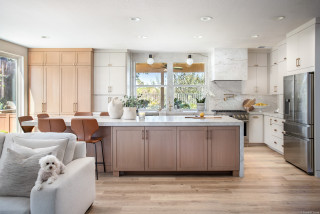
Whether you choose a fixed or hourly fee strategy, it’s important to be consistent. Any changes to this could reduce your client’s confidence.
Gemma Hill of Bayswater Interiors says her firm uses an hourly pricing structure, as they feel it’s fair for both parties. “Clients only pay for what we’ve provided,” she says. “In the past, we’ve had projects where clients have increased the scope of our work, or changed their minds unexpectedly midway through the process, and expected us to start again to incorporate their new ideas, which ended up costing us money in lost hours. This way, we’re invoicing for work completed and are not out of pocket, and this is clear and fair to the client throughout.”
Nicholls, on the other hand, prefers a fixed pricing structure. “When we put together our fee proposal, we estimate the amount of time we’ll spend on a project, using similar jobs as a benchmark,” she says. “Once we’ve given our fee proposal, our fee doesn’t change unless the scope of work changes or there are unforeseen circumstances. We would then discuss this with our client and adjust the fee if necessary.”
Find out how Houzz Pro can help you run your business
This article was originally published by a www.houzz.com . Read the Original article here. .
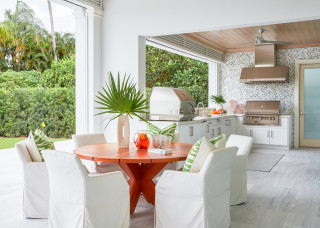
Closed cabinetry will let you keep some glassware and cutlery as well as any bar tools outside. To make juggling everything you’ll be bringing out from the kitchen even easier, consider having a weather-friendly tray on hand.
If space is tight, look for other possible options when it’s time to entertain: the end of a counter, the top of a storage cabinet or even a potting bench.
This article was originally published by a www.houzz.com . Read the Original article here. .
It’s a rare living room that doesn’t call for an area rug. Even in a carpeted room, an area rug helps to define a seating area and make a room feel complete. So if you don’t already have an area rug, or the one you have doesn’t reflect your current taste, this is a good opportunity for a refresh.
If you’re trying to make a formal living space feel more casual, consider a flat-woven or natural-fiber rug (such as jute). Tufted rugs with asymmetrical patterns or high-low textures are good bets if you’re looking to add a contemporary element to your room. Color-wise, light colors tend to make a room feel larger while darker colors make it feel more cozy. And the busier the patterns of your other textiles, the simpler your rug can be, and vice versa.
At least as important as the style of your rug is its size. A common recommendation is that all of the legs of your furniture — or at least the front legs of your seating — should be on the rug. If you love your current rug but it’s too small or irregularly shaped, you can layer it on top of a larger one. Natural-fiber rugs or solid, neutral-toned wool rugs are often good, affordable choices as base layers. A small, vibrant but well-worn antique Persian or Moroccan rug can look gorgeous over a large jute rug, for example.
All of that said, the “perfect rug” isn’t a specific size or style. It’s the one that most appeals to you and fits your lifestyle and budget.
11 Area Rug Rules and How to Break Them
Shop for an area rug